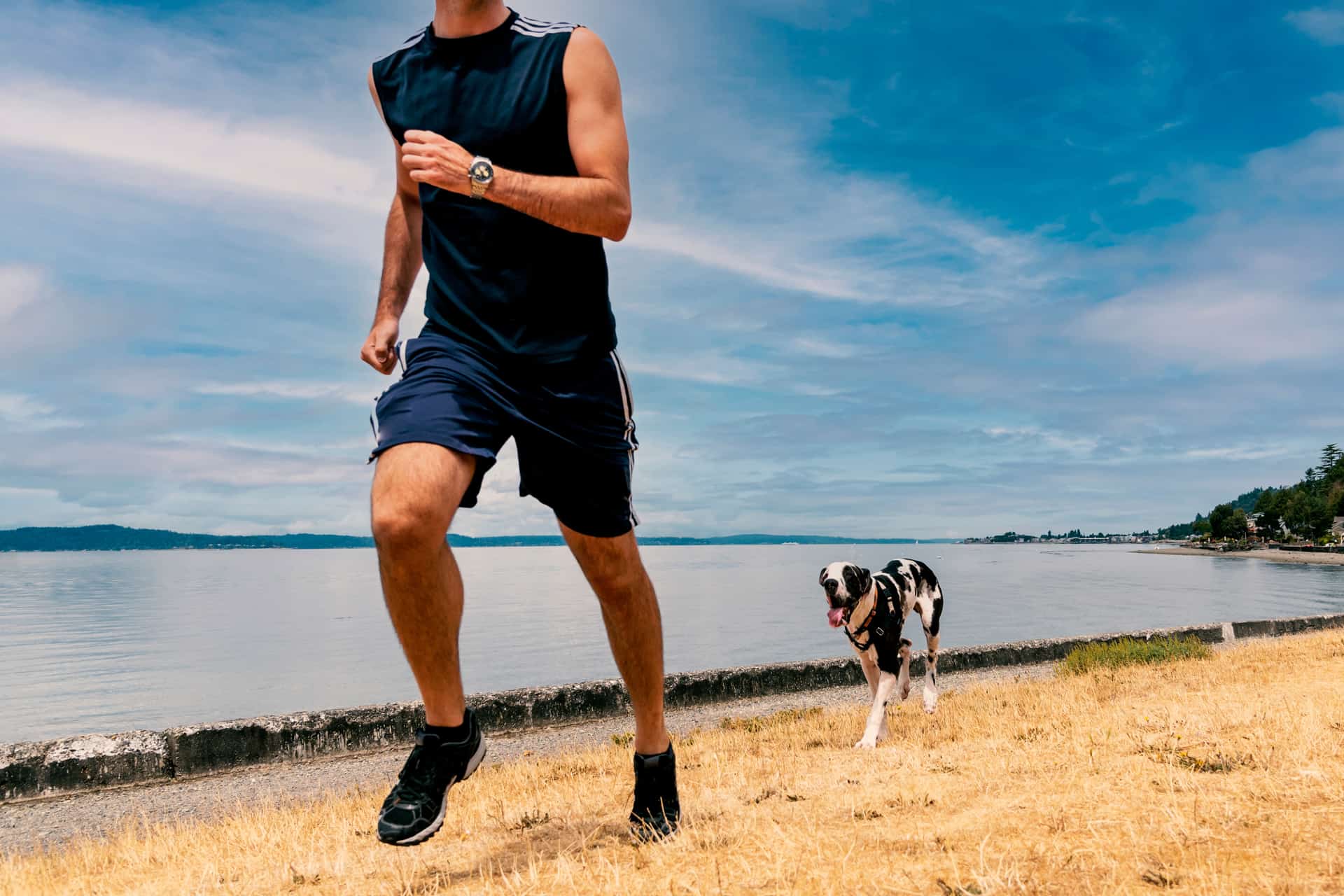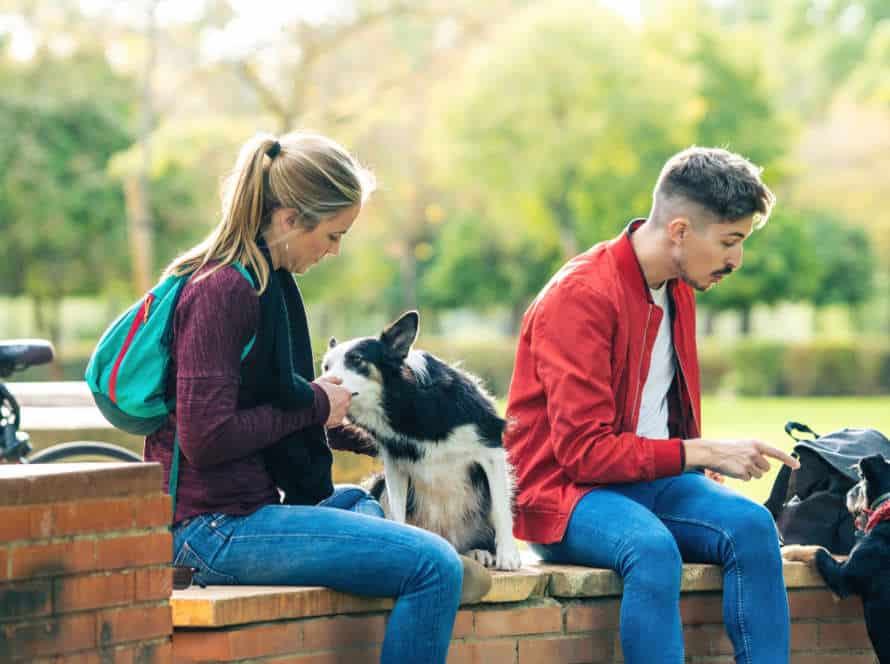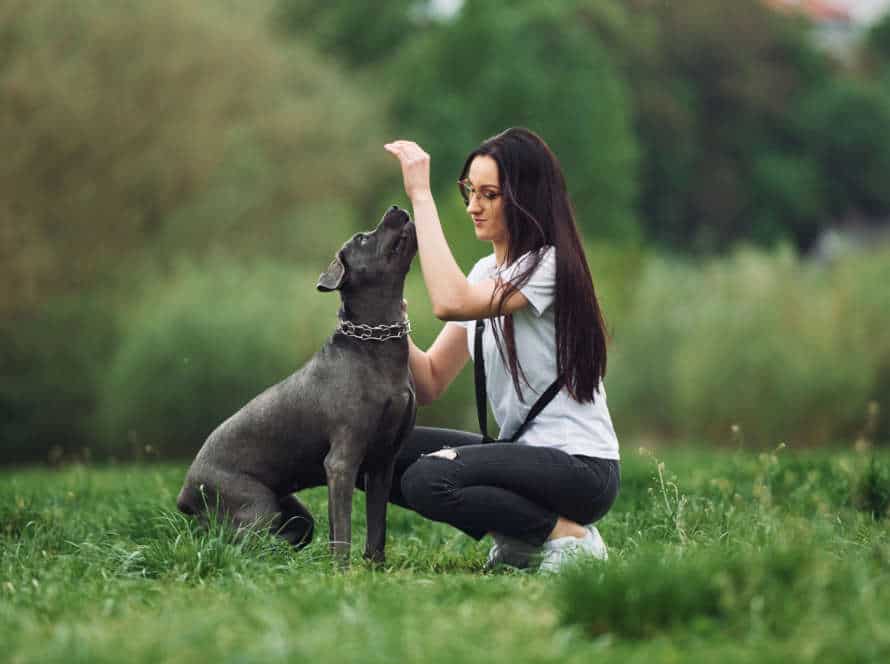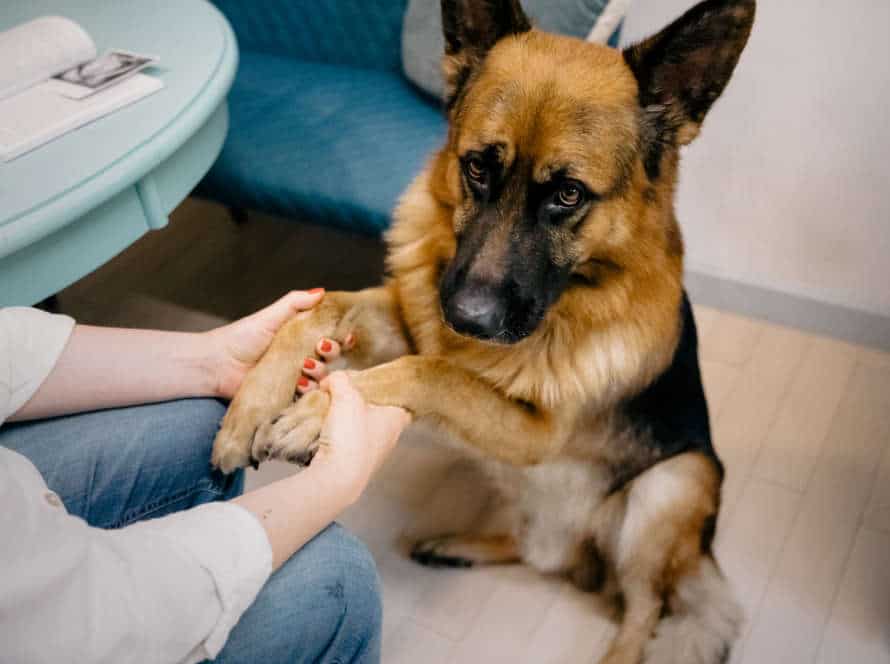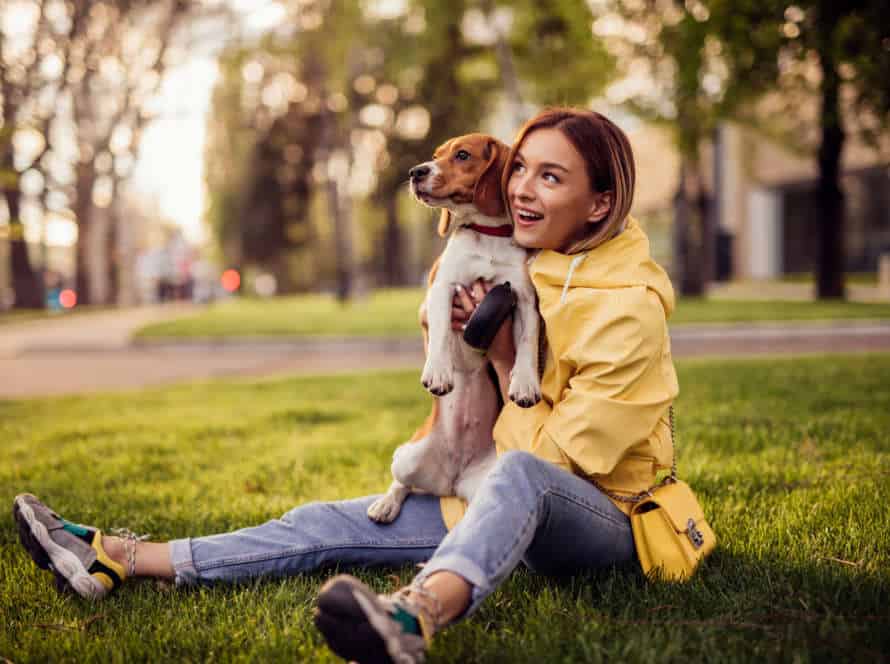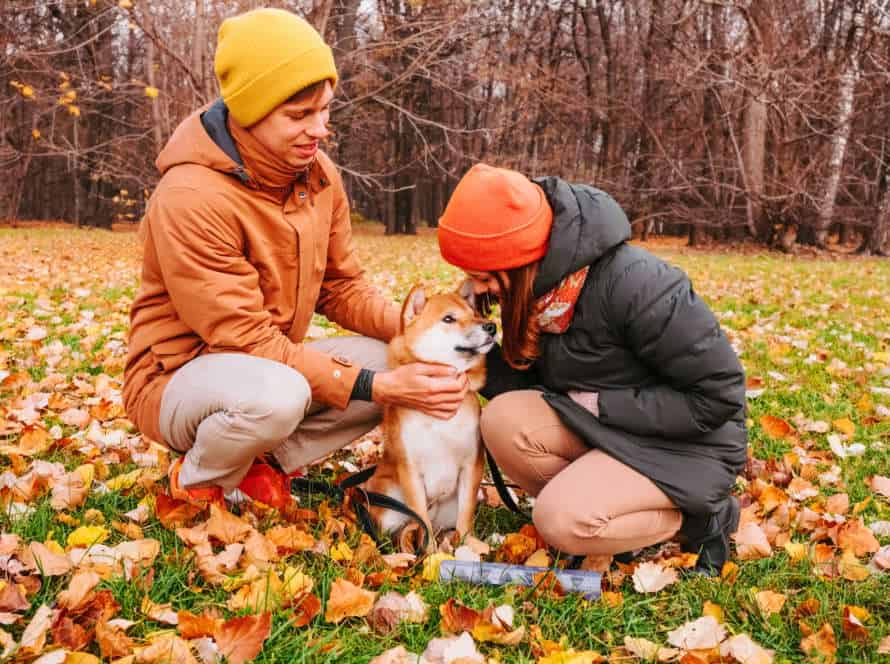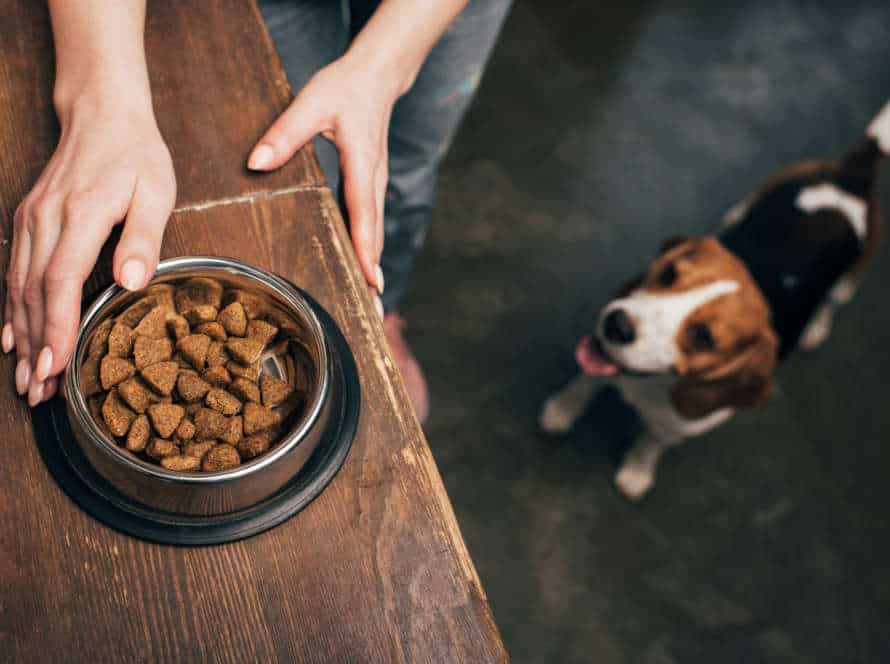Exercise Solutions for Senior Dogs: Maintaining Mobility and Vitality
As dogs age, mobility can be a challenge. Regular exercise can help keep senior pups happy and healthy. Here are some ideas:
- Daily walks – keep the pace and distance suitable for your pup’s abilities.
- Swimming – low-impact and easy on joints. It can help ease pain too.
- Stretching – gentle yoga poses to promote flexibility and range of motion.
- Puzzle toys – keep your pup’s mind active and promote cognitive function.
- Playtime – supervised play with other dogs for social stimulation.
Monitor – keep an eye on your pup’s exercise routine and adjust it as needed.
Understanding Senior Dogs’ Needs
Acknowledge senior dogs’ special needs for exercise. As they age, they get less active, mobile, and energetic. More than just walking and playtime is needed to keep them healthy and fit. To maintain their mobility and vitality, first understand their specific needs. Let’s explore how to do this.
Behavioral changes in senior dogs
As dogs get older, their behavior can affect their health and happiness. It’s so important to understand their needs in their golden years, especially when it comes to exercise. Here are some solutions for senior dogs:
- Low-impact activities such as swimming or walking can help reduce joint pain, increase flexibility, and better the heart.
- Mental exercises like treat-hiding and obedience training can help with cognitive function and prevent age-related cognitive decline.
- Light, short exercises during the day are better than long, tiring workouts that can cause fatigue.
Pro tip: Make sure you consult your vet before starting a new exercise routine to make sure it’s suitable for your senior dog.
Changes in physical health
As pooches age, they witness a variety of changes in their body. These can include joint stiffness, weakened muscles, low energy levels and other age-related issues. To attend to the needs of senior dogs, you must know the altering physical needs and offer suitable exercise solutions to help keep up their mobility and vigour.
For this, you can opt for:
- Low-impact exercise like brief daily walks, light playtime and swimming to help keep the joints healthy and dodge injuries.
- Strength training activities like sit-to-stand movements and slow walking on uneven surfaces to form and sustain muscle mass.
- Diet management with proper nutrition and supplements to help support joints and energy levels.
Pro Tip: Regular vet visits can detect age-related conditions at an early stage and provide procedures to protect your senior pup’s health.
How to recognize pain in dogs
It’s vital to recognize pain in dogs, especially as they age. Here are some signs to watch out for to know if your senior pup is hurting:
- Limping, stiffness, or having trouble getting up/lying down?
- Unwilling to move/exercise, less active or energetic, sleeping more?
- Eating/drinking issues, changes in appetite/weight?
- Excessive licking/chewing of a certain body part, making noise when touched?
- Different behavior like being more aggressive, anxious, or withdrawn?
If your pup is showing any of these, it’s essential to take them to a vet to diagnose/treat any pain/health condition they may have.
Low-Impact Exercises for Senior Dogs
Exercising your senior pup is an awesome way to increase strength, remain mobile and boost their health. Though high-impact activities may not be suitable for some elderly dogs, there’s still many low-impact exercises to keep them fit and lively. In this article, we’ll look into some of the most useful low-impact exercises for senior dogs.
Daily walking routine
A daily walking routine is great for senior dogs! It helps them stay healthy, mobile, and full of life. Low-impact exercises like these are perfect:
- Daily walks – take your pup around the block or to the park.
- Swimming – if they’re comfortable in water, swimming is great for muscle mass.
- Gentle stretching – helps keep muscles flexible and comfy.
- Short play sessions – light games like fetch or tug of war.
Be sure to check in with your vet to make a plan that’s safe and best for your senior dog’s health and mobility needs.
Hydrotherapy for dogs
Hydrotherapy is a great way to give your senior dog low-impact exercise. It helps them stay mobile and active as they age.
Know this: Hydrotherapy involves swimming or exercising in a pool with a floatation device. The water’s buoyancy reduces joint stress, making it great for dogs with arthritis or other mobility issues. It’s also beneficial for overweight or obese dogs who need to lose weight without high-impact exercise.
But, consult your vet first. They can tell you if hydrotherapy is safe for your dog, depending on any underlying health conditions.
The benefits of stretching exercises
Stretching exercises can bring several advantages, especially for senior pooches. They can help with flexibility, decrease muscle strain, and keep doggos active and mobile.
Advantages of Stretching Exercises for Senior Dogs:
- Enhanced joint movement: Doing stretching regularly can preserve joint suppleness and lessen the possibility of joint rigidity and arthritis.
- Upgraded circulation: Stretching boosts blood flow to the muscles, which helps take away waste products & deliver oxygen and nutrients to the tissues.
- Decreased muscle tautness: Stretching can reduce muscle stiffness and ache, which can result in improved mobility and a higher quality of life for old dogs.
- Higher range of motion: Stretching workouts can upgrade a pup’s range of motion, which is essential for keeping mobility and avoiding injuries.
In the end, adding stretching exercises to an old pup’s schedule can upgrade their overall health, keeping them content and active during their golden years.
Alternative Exercise Solutions for Senior Dogs
Our precious senior doggos need special care as they age. Exercise is one way to keep them fit and spry. But, long walks may not be the best idea due to their older age. So, here are some ideas to help keep your pup active and healthy. Let’s explore!
Mental stimulation exercises for dogs
Mental stimulation exercises are beneficial for dogs of all ages. They are particularly useful for elderly dogs with reduced energy and mobility. Here are a few mental stimulation activities to keep your pet happy, healthy and mentally active:
- Puzzle toys: These toys challenge problem-solving skills and can be filled with treats for extra fun.
- Scent games: Your dog can locate treats, toys or objects by sniffing. These games are easy to play.
- Training sessions: Elderly dogs may not be able to do physical activities, but training can provide mental stimulation, as well as boosting confidence and skills.
- Interactive feeding: Toys that require dogs to work for their food provide mental stimulation and help digestion.
Mental stimulation exercises can improve a senior dog’s life by keeping their brain active and managing cognitive function. Additionally, regular vet checkups, healthy diet, and exercise are essential too.
How to safely introduce new exercise activities for senior dogs
Introducing new exercises for senior doggos must be done with caution. Here are some tips to keep them healthy and active:
- Start slow – short walks, gentle stretching.
- Monitor health – observe their behavior, breathing rate, energy level.
- Modify intensity – adjust as needed to accommodate physical limitations.
- Choose activities – swimming, gentle play, slow walks.
- Pro Tip – regular physical activity is very important for senior doggos. Introduce new exercises and modify old ones to keep them active and healthy.
Yoga and massage for senior dogs
As dogs grow older, they may have difficulty moving around and feel joint pain. Yoga and massage can help keep senior dogs active and healthy.
Yoga: Poses like downward dog and puppy pose can increase flexibility, balance, and circulation. Plus, they can help dogs relax and reduce stress. For senior dogs, use blankets or blocks for support and avoid poses that cause discomfort.
Massage: Massage can improve circulation, reduce joint stiffness, and soothe older dogs. Begin with gentle strokes on the back and then gently massage their legs and feet. Use firm pressure, but be careful around sensitive areas like joints.
These alternative exercises will help senior dogs stay happy and healthy in their later years.
Nutrition and Supplements for Senior Dogs
Nutrition and supplements are key for senior dogs to stay active and healthy. We’ll look at what’s best for your pup and how it can help. Their diet and supplements can help keep their joints and muscles strong. So, let’s explore the nutrition and supplements made for mature pooches.
Understanding nutritional needs for senior dogs
As dogs age, their nutrition needs change. It’s essential to know these needs for senior dogs. A well-balanced diet tailored to them is best for their health and vitality.
Senior dog food with lower calories, more fiber, and more antioxidants is recommended. A few supplements for them include:
- Omega 3 fatty acids for joint health and brain function.
- Glucosamine and chondroitin for joint health and movement.
- Probiotics and prebiotics for their digestion.
Exercise is essential too. Low-impact activities like walking and swimming should be part of their daily routine. Proper diet and exercise help senior dogs lead happy, healthy lives.
Supplements that support joint health in senior dogs
As pups age, they may have joint pain, arthritis, or mobility issues. To support joint health in older dogs, several supplements can help them live a healthy and pain-free life.
- Glucosamine: This supplement reduces inflammation and helps rebuild cartilage in the joints, improving mobility.
- Chondroitin: Chondroitin increases joint lubrication and flexibility, reducing aches and pains.
- Omega-3 Fatty Acids: Omega-3s have anti-inflammatory properties to reduce joint pain.
- MSM (Methylsulfonylmethane): It lowers inflammation, relieves pain, and increases joint flexibility.
- Probiotics: Probiotics aid gut health and decrease inflammation.
Before giving any supplements to your pooch, talk to your vet. They can recommend the right dosage based on their age, size, and breed. Plus, good diet and regular exercise are also essential for senior dog joint health.
Foods to avoid for healthy aging in dogs.
As dogs age, they need a unique diet to keep them healthy and active. Even though there are many foods old dogs can eat safely, there are some foods best avoided. Here are five:
- Stay away from high-fat foods. Older dogs have slower metabolisms and eating too much of these can cause obesity and other health problems.
- Don’t give cooked bones. These can break and choke your dog or hurt them inside.
- Grains and gluten aren’t good for older dogs. They have trouble digesting these.
- Too much protein is hard on an old dog’s kidneys.
- Processed foods have additives that can cause health issues.
For healthy aging, it’s important to give your dog a balanced diet and exercise. Plus get advice from your vet about the right diet and exercise plan for your pup.
Frequently Asked Questions
Q: What are the benefits of exercise for senior dogs?
A: Exercise is important for senior dogs because it helps maintain muscle mass, improves circulation, helps with weight control, and provides mental stimulation.
Q: How much exercise should a senior dog get?
A: The amount of exercise a senior dog needs will depend on their breed, size, age, and overall health. Generally, two short walks per day or 15-30 minutes of gentle exercise is recommended.
Q: What are some low-impact exercises for senior dogs?
A: Low-impact exercises for senior dogs include short walks, gentle swimming, stretching or range of motion exercises, and playing with toys.
Q: How can I tell if my senior dog is in pain during exercise?
A: Signs of pain in senior dogs during exercise may include limping, panting excessively, reluctance to move or perform certain movements, or vocalizing. It is important to consult with a veterinarian if you notice any signs of pain or discomfort in your senior dog during exercise.
Q: Can exercise help prevent age-related health problems in senior dogs?
A: Exercise can help prevent age-related health problems in senior dogs by improving circulation, maintaining muscle mass, and promoting overall physical and mental wellbeing.
Q: What are some tips for safely exercising senior dogs?
A: Tips for safely exercising senior dogs include starting slowly and gradually increasing intensity and duration of exercise, avoiding high-impact activities, providing plenty of water and rest breaks, and consulting with a veterinarian before beginning an exercise program.

